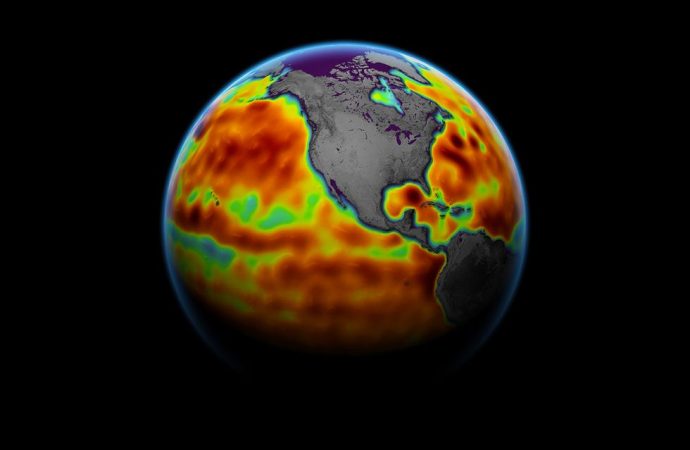The quirk could cause unprecedented coastal flooding next decade.
Source: Popular Mechanics
Thanks to rising sea levels and a wobble in the moon’s orbit, the 2030s will be marked by a record number of high-tide floods around the coastal United States, scientists warn in a new paper.
So-called “nuisance floods” occur when tides rise between 1.75 and 2 feet above the daily average high tide, according to the U.S. National Oceanic and Atmospheric Administration (NOAA). These kinds of floods may not be as extreme as those caused by hurricanes or other natural disasters, but they can still cause water to back up into basements and gurgle from sewage drains.
NOAA reports that more than 600 nuisance floods occurred in the U.S. in 2019, and between May 2020 and April 2021, coastal communities saw twice as many high tide flooding days than they did 20 years ago. But new NASA-led research—published last month in the journal Nature Climate Change—suggests the trend will only grow more dramatic in the 2030s.

Expect to see three to four times more high-tide flood days than at present, all concentrated in the space of a few months of activity each year. Floods may even occur in clusters that last a month or longer, leaving cities along the east and west coasts to deal with floods every day or two, according to NASA.
“It’s the accumulated effect over time that will have an impact,” lead study author Phil Thompson, an assistant professor at the University of Hawaii, says in a NASA press release. “If it floods 10 or 15 times a month, a business can’t keep operating with its parking lot under water. People lose their jobs because they can’t get to work. Seeping cesspools become a public health issue.”
Climate change, and the rising sea levels that come along with it, is only partly to blame. In fact, the main factor is a “wobble” in the moon’s orbit that regularly occurs every 18.6 years. The wobble isn’t new (it was first reported in 1728, according to NASA), but combined with the effects of climate change, it will create an unprecedented series of high-tide flooding.

To understand the significance of this wobble, let’s first unpack the moon’s relationship with the ocean’s tides. The moon physically pulls on the oceans via gravity (for that reason, the sun also affects the tides, although less noticeably), causing high and low tides. High tide, when the ocean’s fluctuating level is at its most elevated, can already cause problems in coastal towns. It can cause backflow in rivers that empty into the ocean, for example—just check out the daily tide forecast for New York City.
A couple of times each month, high tides are made even higher by the combined factors from Earth, the sun, and the moon. These are called spring tides, and they also mean lower low tides—more extremes in both directions. But spring tides are just one way the high tide varies over time, NASA explains.
Let’s return to that moon wobble. The moon suppresses tides on Earth for half of the 18.6-year cycle, meaning high tides are lower than normal, and low tides are higher than normal. But during the other half of the time, the tides are amplified. We’re in the latter period of the moon’s cycle at the moment, but the sea level hasn’t risen enough yet from climate change for the effect to be compounded—yet.
Here’s an extremely professional illustration of how that effect “stacks” with the overall sea level during high tides:

The next time we’re on the amplified side of this moon cycle, however, the combined higher sea levels and rising tides will cause a record number of nuisance floods along all of the mainland coastlines in the U.S., as well as in Hawaii and Guam.
As an example, the new paper highlights St. Petersburg, Florida, which is in the relatively low-lying Tampa Bay area. The researchers forecast just six “minor flooding” days per year between 2023 and 2033—a number that jumps to 67 days per year between 2033 and 2043. For La Jolla, California, the number jumps from one to 49 days per year. For Honolulu, Hawaii, it leaps from two to 63 days per year.

By 2030, the sea level will have risen by an estimated minimum of 1.4 inches, according to the Royal Society, the U.K.’s national academy of sciences. By 2039, that number will be more like 2.7 inches minimum. That, combined with the wobble effect, could leave beach communities at odds with nature, necessitating some serious infrastructure changes. Let’s hope stakeholders will take this new report seriously.
Source: Popular Mechanics

































Leave a Comment
You must be logged in to post a comment.